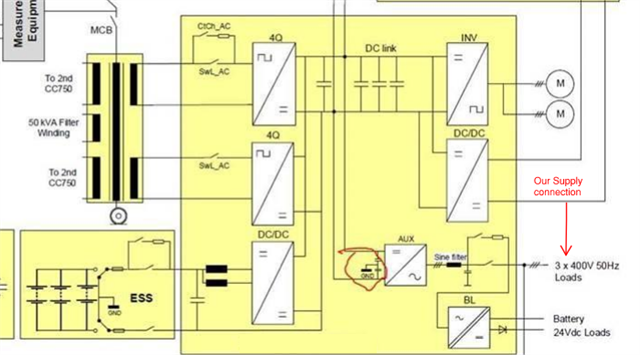Hi All,
First post so take it easy!
We have a requirement to design an installation using a star/delta isolation transformer to feed shore supply sockets to power and charge new tram/trains (Believe first of their kind in the UK). I am trying to get an understanding of the implications, and what we need to consider in the design as this Tx will be installed within the building supplied from the buildings existing LV system. The trains on board converter has a DC link to ground which could cause earth leakage hence the request for a Star Delta Tx to prevent tripping of the buildings LV supply.
From my understanding we will need to install insulation monitoring for first fault conditions and on 2nd fault condition will isolate the circuit (An IT System). The train does not require a neutral or CPC (But will we need a CPC to comply with BS7671? If so how does this connect to a delta winding?). But where I am getting confused is the earthing side of things. Everything within the building including the rails the trains sits on, is bonded back to the building MET. Is there a risk of different potentials within the area? or because they are bonded back to the building MET they will remain at the same potential as this system supplies the Isolation Tx? I may be over thinking this but have never come across this before so eager to educate myself.
Thanks
K


